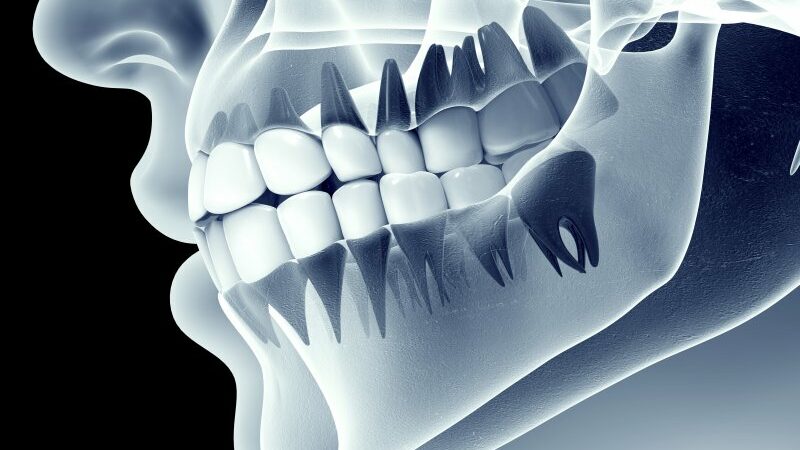Navigating the Nitrate vs Nitrite Nexus: Unveiling Their Powers and Pitfalls

Nitrate vs Nitrite – In nutrition and chemistry, “nitrate” vs “nitrite” often appear side by side, evoking curiosity and confusion. These compounds, composed of nitrogen and oxygen, play pivotal roles in our lives, from supporting plant growth to enhancing the flavour and preservation of our food.
However, the distinctions between these two compounds and their potential effects on health can be intricate. This blog’ll unravel the differences between nitrates and nitrites, exploring their uses, benefits, risks, and how they intertwine with our well-being.
Whether you’re health-conscious or simply eager to expand your understanding of these compounds, let’s delve into nitrate versus nitrite and demystify their significance.
What is nitrate vs nitrite?
Nitrate vs nitrite are chemical compounds that contain nitrogen and oxygen, commonly found in various natural and synthetic sources. They have diverse applications in agriculture, food preservation, and chemistry.
- Nitrates (NO3-): Nitrates are chemical compounds with a nitrogen atom bonded to three oxygen atoms. They are commonly found in nature as salts and are often used as a source of nitrogen for plants. Nitrates are essential nutrients for plant growth and are commonly used as fertilizers in agriculture to enhance crop yield.
- Nitrites (NO2-): Nitrites are chemical compounds containing nitrogen and two oxygen atoms. The oxidation of nitrates often forms them and can serve various purposes. One significant application of nitrites is their use as food additives, particularly in meat products. Nitrites help preserve the colour, flavour, and safety of cured meats by inhibiting the growth of harmful bacteria, such as Clostridium botulinum, which can cause botulism poisoning. Additionally, nitrites contribute to the characteristic pink or reddish colour of cured meats like bacon, ham, and sausages.
While nitrates and nitrites have important uses, excessive consumption or exposure can pose health risks. In particular, there has been some concern about the potential formation of nitrosamines, which can be carcinogenic when nitrites react with certain compounds in the stomach. Efforts are made to control the levels of nitrates and nitrites in food products to ensure their safety for consumption.
Where nitrate vs nitrite is found?
Nitrates (NO3-) and nitrites (NO2-) are found in various natural and synthetic sources. Here are some common sources where nitrates and nitrites can be found:
Nitrates:
- Soil and Water: Nitrates are naturally present in soil and water due to the breakdown of organic matter and the nitrogen cycle. They serve as essential nutrients for plants, aiding in their growth and development.
- Fertilizers: Nitrate-based fertilizers are commonly used in agriculture to provide plants with a nitrogen source for optimal growth. These fertilizers release nitrates into the soil, which plants can absorb through their roots.
Nitrites:
- Cured Meats: Nitrites are widely used as food additives, especially in cured meats like bacon, ham, sausages, and hot dogs. They help preserve these products’ colour, flavour, and safety by inhibiting the growth of harmful bacteria.
- Drinking Water: In some cases, nitrites can be present in drinking water due to runoff from agricultural areas or contamination from wastewater. High levels of nitrites in drinking water can be a health concern, especially for infants, as they can interfere with the oxygen-carrying capacity of haemoglobin in the blood.
- Industrial Processes: Nitrites are used in various industrial processes, such as manufacturing certain chemicals, dyes, and pharmaceuticals.
- Natural Sources: Nitrites can also be produced naturally through microbial activity, including the breakdown of organic matter in soil and water.
It’s important to note that while nitrates and nitrites have important functions, their presence in certain contexts can lead to health and environmental concerns.
How nitrates affect blood pressure and heart health?
Nitrates can have both positive and negative effects on blood pressure and heart health, depending on the context and the sources of nitrates.
Positive Effects:
- Dietary Nitrates: Nitrates found naturally in certain foods, particularly vegetables like leafy greens (spinach, lettuce, arugula), beets, and other root vegetables, can have potential cardiovascular benefits. These dietary nitrates are converted into nitric oxide (NO) in the body. Nitric oxide is a vasodilator, which helps relax and widen blood vessels, improving blood flow and potentially lowering blood pressure. This effect may contribute to overall heart health and reduced risk of cardiovascular diseases.
- Cardiovascular Function: Nitric oxide produced from dietary nitrates can help maintain healthy endothelial function, which is the inner lining of blood vessels. Healthy endothelial function is crucial for proper blood vessel dilation, blood flow regulation, and atherosclerosis prevention (plaque buildup in arteries).
Negative Effects:
- Excessive Nitrate Intake: While dietary nitrates from vegetables can have beneficial effects, excessive consumption of nitrates from contaminated water or certain processed foods can be harmful. High nitrate intake, especially in the form of nitrate-rich water, has been associated with methemoglobinemia, a condition in which the oxygen-carrying capacity of blood is reduced. This is particularly concerning in infants and young children.
- Nitrosamines Formation: when present in the body, Nitrites can potentially react with certain compounds to form nitrosamines. Nitrosamines are compounds that have been linked to an increased risk of cancer. This risk is especially relevant in the context of processed meats that contain added nitrites. The combination of nitrites with certain amino acids in meat products and the high cooking temperatures can lead to the formation of nitrosamines, which are considered potentially carcinogenic.
- Blood Pressure in Certain Individuals: In some individuals, particularly those with certain medical conditions like hypertension (high blood pressure) or congestive heart failure, excess nitrate intake may lead to increased blood pressure due to the conversion of nitrates to nitric oxide. This can result in a fluid overload and worsen these conditions.
Can nitrates fuel physical performance?
Yes, nitrates found in certain foods can potentially enhance physical performance, especially in endurance activities, due to their ability to improve blood flow and oxygen delivery to muscles. This effect is primarily attributed to converting dietary nitrates into nitric oxide (NO) in the body.
Nitric oxide is a vasodilator that helps relax and widen blood vessels. This dilation of blood vessels improves blood flow, which can have several positive effects on physical performance:
- Improved Oxygen Delivery: Nitric oxide-mediated vasodilation increases blood flow to muscles. This means more oxygen and nutrients can be delivered to working muscles, which is crucial for energy production and endurance.
- Reduced Oxygen Cost: The body requires oxygen to generate energy during exercise. When blood flow to the muscles is optimized, the oxygen cost of exercise may be reduced. This can lead to improved efficiency and endurance during prolonged activities.
- Delayed Fatigue: By enhancing oxygen delivery and nutrient supply to muscles, nitric oxide may help delay the onset of muscle fatigue. This can lead to improved performance during endurance events.
- Enhanced Mitochondrial Efficiency: Nitric oxide can also improve mitochondrial efficiency, which is important for energy production within muscle cells. This can contribute to better endurance and overall physical performance.
Foods that are particularly rich in dietary nitrates and can contribute to improved physical performance include:
- Beets: Beetroot juice is a well-known source of dietary nitrates. Studies have shown that consuming beetroot juice before exercise can improve endurance and exercise performance.
- Leafy Greens : Vegetables like spinach, arugula, and lettuce also contain significant amounts of dietary nitrates.
- Other Nitrate-Rich Vegetables: Other vegetables, such as celery, radishes, and carrots, also contain varying levels of nitrates.
Risks of nitrate vs nitrite
Nitrates and nitrites, while having various uses and potential benefits, also come with certain risks, particularly when consumed in excessive amounts or in specific contexts. Here are some of the risks associated with nitrates and nitrites:
1. Nitrosamine Formation: One of the main concerns of nitrites is their potential to react with certain compounds, particularly amines and amino acids, to form nitrosamines. Nitrosamines are known to be potentially carcinogenic and have been linked to the development of certain types of cancer, particularly when consumed in high amounts. This risk is particularly relevant in processed meats containing added nitrites cooked at high temperatures. Nitrosamine formation can be influenced by factors such as the cooking method, temperature, and the presence of other compounds.
2. Methemoglobinemia: High levels of nitrates, particularly from contaminated drinking water or certain foods, can lead to methemoglobinemia. In this condition, nitrites can cause an abnormal increase in the blood’s methemoglobin level. Methemoglobin is a form of haemoglobin that cannot carry oxygen effectively, reducing the blood’s oxygen-carrying capacity. This can especially harm infants and young children, causing bluish skin (cyanosis) and difficulty breathing.
3. Blood Pressure Concerns: While dietary nitrates from natural sources like vegetables can benefit blood vessel dilation and blood pressure, excessive nitrate intake from supplements or certain processed foods can potentially lead to increased blood pressure, particularly in individuals with certain medical conditions like hypertension.
4. Environmental Concerns: The excessive use of nitrates as fertilizers in agriculture can lead to nitrate runoff into water bodies, contributing to water pollution and eutrophication. Eutrophication is the process by which excessive nutrients in water bodies lead to excessive plant growth, which can disrupt ecosystems and harm aquatic life.
5. Allergies and Sensitivities: Some individuals may be sensitive or allergic to nitrates or nitrites, which can lead to allergic reactions, such as skin rashes or gastrointestinal symptoms.
To mitigate these risks:
- Consume nitrate-rich foods from natural sources, like vegetables, as part of a balanced diet.
- Limit the consumption of processed meats that contain added nitrites.
- Be cautious about the source and quality of drinking water to avoid excessive nitrate levels.
- Consult a healthcare professional or registered dietitian for personalized advice if you have specific health conditions.
How to minimize nitrosamine exposure?
Minimizing nitrosamine exposure involves making conscious choices about your diet and cooking practices, particularly regarding foods containing nitrites. Here are some strategies to help reduce your exposure to nitrosamines:
1. Limit Processed Meats: Processed meats, such as bacon, ham, sausages, hot dogs, and deli meats, often contain added nitrites as preservatives. These are the primary sources of nitrosamine formation in the diet. To minimize exposure, reduce the consumption of these types of processed meats.
2. Choose Nitrite-Free Alternatives: Some manufacturers offer nitrite-free versions of processed meats. Look for “nitrite-free” or “uncured” products when shopping for meats.
3. Opt for Natural Nitrates: Consume nitrate-rich foods from natural sources like vegetables, as they have been associated with potential health benefits without the same nitrosamine risk. Examples include spinach, kale, beets, arugula, and lettuce.
4. Avoid Overcooking: Cooking processed meats at high temperatures, especially grilling or frying, can increase the likelihood of nitrosamine formation. Cooking methods that involve prolonged exposure to high heat and direct flames can contribute to the chemical reactions that produce nitrosamines. Consider gentler cooking methods like baking or steaming.
5. Add Antioxidant-Rich Ingredients: Certain antioxidants, such as vitamin C and vitamin E, have been shown to inhibit nitrosamine formation. Incorporating foods rich in these antioxidants into your diet may help mitigate the formation of nitrosamines. For example, adding citrus fruits, berries, and nuts to your meals can provide these antioxidants.
6. Marinate Foods: Marinating meats before cooking can reduce nitrosamine formation. Marinades that contain ingredients like vinegar or citrus juices may help counteract the formation of nitrosamines during cooking.
7. Be Mindful of Food Combinations: Certain food combinations, such as using nitrate-rich vegetables and processed meats, might reduce the potential for nitrosamine formation. Antioxidants and other compounds in vegetables may help inhibit the formation of nitrosamines during cooking.
8. Stay Hydrated: Drinking water during and after consuming nitrate-rich foods may help dilute the concentration of nitrates in the digestive system, potentially reducing nitrosamine formation.
9. Check Label Information: Read the ingredient labels when purchasing processed foods, especially those containing meats. Some products may use alternative preservatives or processes that minimize nitrosamine formation.
FAQs:
1. What are nitrates and nitrites, and how do they differ?
Nitrates and nitrites are chemical compounds that contain nitrogen and oxygen. Nitrates (NO3-) are nitrogen atoms bonded to three oxygen atoms and are naturally found in soil, water, and various foods. On the other hand, nitrites (NO2-) contain a nitrogen atom and two oxygen atoms.
While nitrates are commonly used in agriculture as fertilizers, nitrites are often used as preservatives in processed meats. The key difference lies in their molecular structure and their roles in different contexts.
2. Are nitrates and nitrites harmful or beneficial for health?
Both nitrates and nitrites have potential benefits and risks depending on their sources and use. Nitrates from natural sources like vegetables can improve cardiovascular health by promoting the production of nitric oxide, which enhances blood flow and supports overall vascular function.
However, excessive consumption of nitrites, especially from processed meats, can lead to the formation of nitrosamines, potentially carcinogenic compounds. It’s important to balance the intake of nitrates from natural foods with avoiding excessive nitrite-containing processed foods to reap their benefits while minimizing risks.
3. How can I minimize nitrosamine exposure while still enjoying nitrate-rich foods?
Consider several strategies to minimize nitrosamine exposure, particularly from processed meats containing nitrites. Opt for nitrite-free or uncured versions of processed meats when possible. Focus on consuming natural nitrate-rich foods like vegetables, which offer cardiovascular benefits without the same nitrosamine risk.
When cooking, avoid high-temperature methods that can promote nitrosamine formation, and consider incorporating antioxidants like vitamins C and E to mitigate their creation. By making informed food choices and practising mindful cooking techniques, you can enjoy the advantages of nitrates while reducing potential risks associated with nitrosamines.




